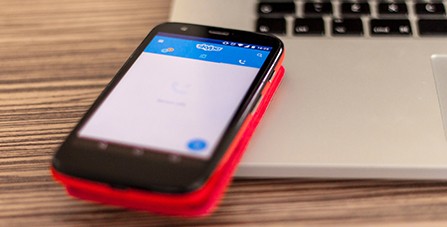Just because you're away from your desk, doesn't mean you can't be just as productive. In fact, many people find that their efficiency goes up when they're outside of the office – but how can you and your team harness the power of remote working, and give your business a boost?
Assigning and completing tasks
“Eat a live frog first thing in the morning and nothing worse will happen to you the rest of the day.” - Mark Twain
Strange advice – but, when applied to time management, it does make sense. Essentially, it means you should write your to-do list each morning (or the night before), and tackle the toughest task first. It means that your day will gradually get easier (which can only be a good thing). It’s something we’ve covered more extensively in this article, so be sure to check it out.
“At home, it can be particularly difficult to get going with work in the mornings. I've taken the approach of dedicating my first hour of the day to work on the most important thing I have on my plate, which gets me going early in the day and adds some urgency to it all.” - Greg Hayes, Branch Furniture
If you’re not one for amphibians first thing in the morning, you can still decide what tasks need to be done, and how long it might take to do them. That’s where the Pomodoro time management1 technique can come in handy. The Pomodoro technique is a way of concentrating your tasks into 25-minute time slots, and letting nothing else distract you during this time period. You then take a five-minute break before moving on to the next task. It makes you think about what needs to be done, and what’s achievable, so that you can schedule your day properly.
“I find focused task-based workflows to be an essential approach for my remote work… Allocating a specific window of time to answer emails dramatically improves my workflow. This is especially true for me during times of market shifts that result in an increased volume of email—often during non-business times.” Zack West, Novomotus
Taming the email monster can feel like a mammoth task at times, batching these jobs into designated periods can help to streamline your day, and help you become more productive. And, if people know you’re not constantly available, they might find a solution to their problem without you – freeing up even more time.
Prioritizing
Everyone works in different ways. While some might be most productive after their morning coffee, others might not hit their stride until mid-afternoon or later. With that in mind, having a clear picture of what’s in progress, or about to start, can be incredibly useful – and the Kanban2 method could become your new (work) best friend, even if it's just for managing your personal workload.
The simplest Kanbans have as few variables as possible. To begin with, you can split your tasks into three columns – ‘Not Started’, ‘In Progress’ and ‘Completed’. Team and time management tools like Trello3 or Monday4 are good places to get started with a Kanban. They will allow you to prioritize, plan, and deliver on what needs to be done, and can be useful not only for individuals, but for teams as well. Which brings us on to…
Individual working and managing remote teams
Away from the Kanban board, you should start your day with a planning meeting. A clear idea of your actions and goals will help you to focus on what’s important, and plan your time most efficiently. From there, you can work out who you need to have a more in-depth catch-up with, and schedule appropriately.
“Since we all have to work from home, I've had to shift our communication. Right now, we have a conference call scheduled every morning at 8am. This is to ensure that everyone is able to meet their goals, and also get feedback and collaborate with other team members on their struggles and opportunities.” Jeff Neal, The Critter Depot
Some people will work more independently than others, while some will lean on you more for assistance, so make sure everyone knows what’s expected of them at the outset. Applications like Jira5 and GitHub6 will be familiar to software developers, but can also be very useful for general task management. They can help you manage workflow, version control, and project management, and help keep everyone on the same page while working at a distance.
Organization and communication
How you stay in touch with your team matters a great deal when working away from the office, and it’s crucial you avoid being overloaded with emails. While it’s important that everyone is kept in the loop, there are – thankfully – plenty of ways to do it that won’t hit your inbox.
By keeping emails strictly business, you can ensure your focus won’t be taken away while your tackling your to-do list. You can keep ‘water-cooler’ office chat to WhatsApp7, Slack8, or text – while face-to-face calls can easily be made over Skype9, Zoom10 or Google Hangouts11. Just because you’re not in the same room doesn’t mean you have to act any differently with your colleagues, and if you’re all spread out all over the place, it can help keep you together to maintain all your usual interactions virtually.
If in doubt, overcommunicate. If you think someone might want to know something, let them know. And at the end of the day, let people know you’re signing off. This will not only let people know you’re unavailable, but may serve as a reminder that they can finish up, too.
“Our most effective tactic so far has been a 30-minute meeting at the beginning of each day, where each team member answers two questions: ‘What did I accomplish yesterday?’ and ‘What am I working on today?’ These are simple questions, but going through them as a group each day has allowed the team to stay focused on the big picture – and each individual’s part in it – while staying connected.” Alan Ricks, Lumera Diamonds
It is important to remember, however, that conference calls need a clear agenda – and someone to lead it. Ensure that only the people who need to be on the call are invited, and that questions can be answered in a succinct, clear manner. Try and keep group calls short, and follow up with individuals or teams after to confirm they know what they’re doing. Learn more about how to run an effective business meeting and making more of your time.






